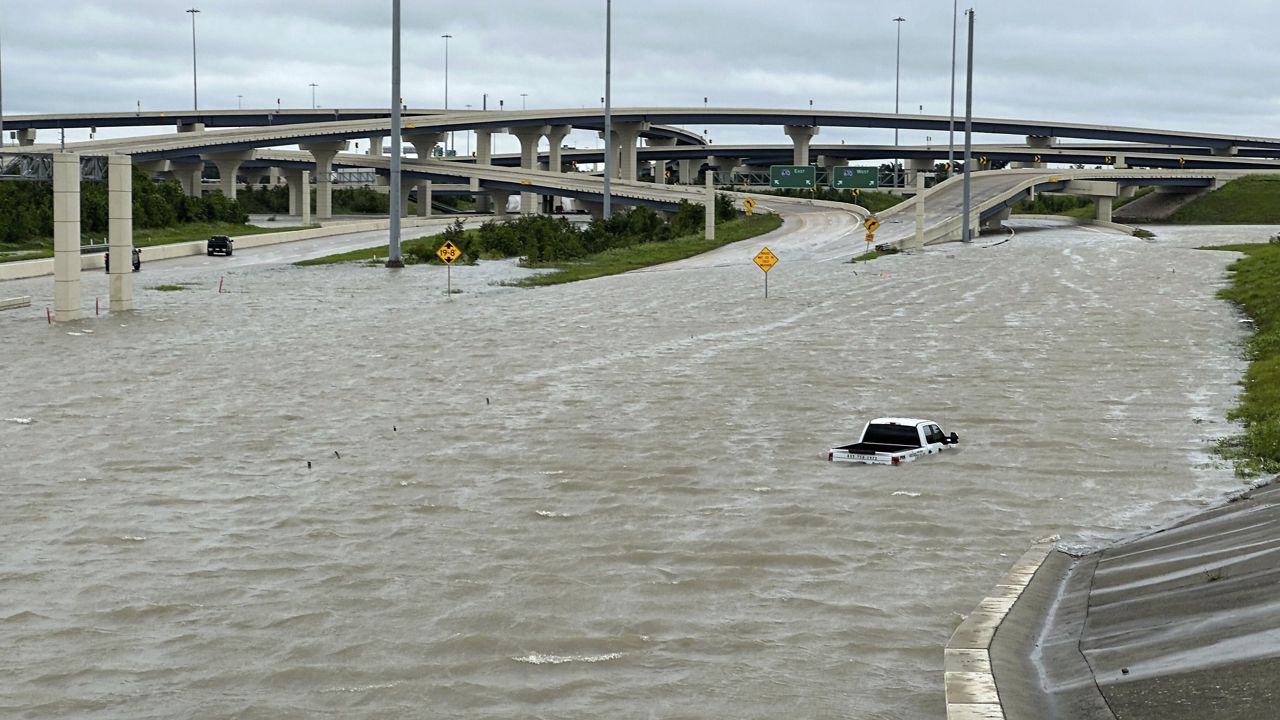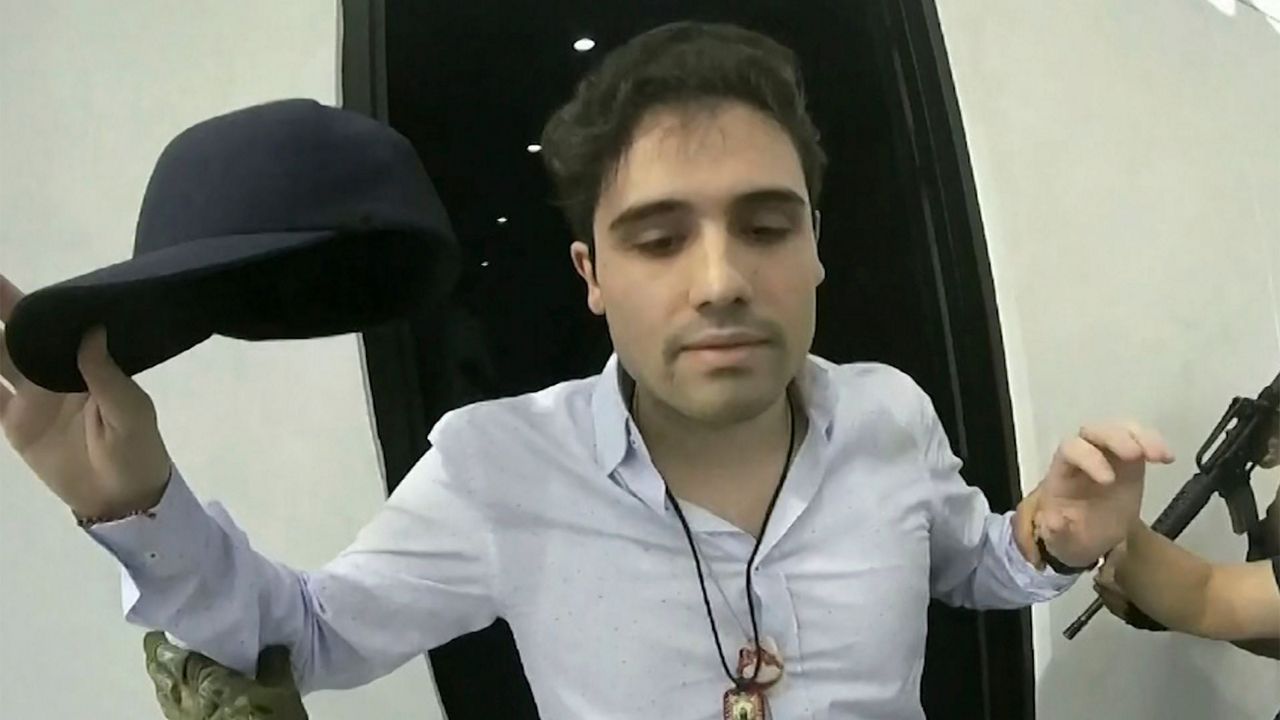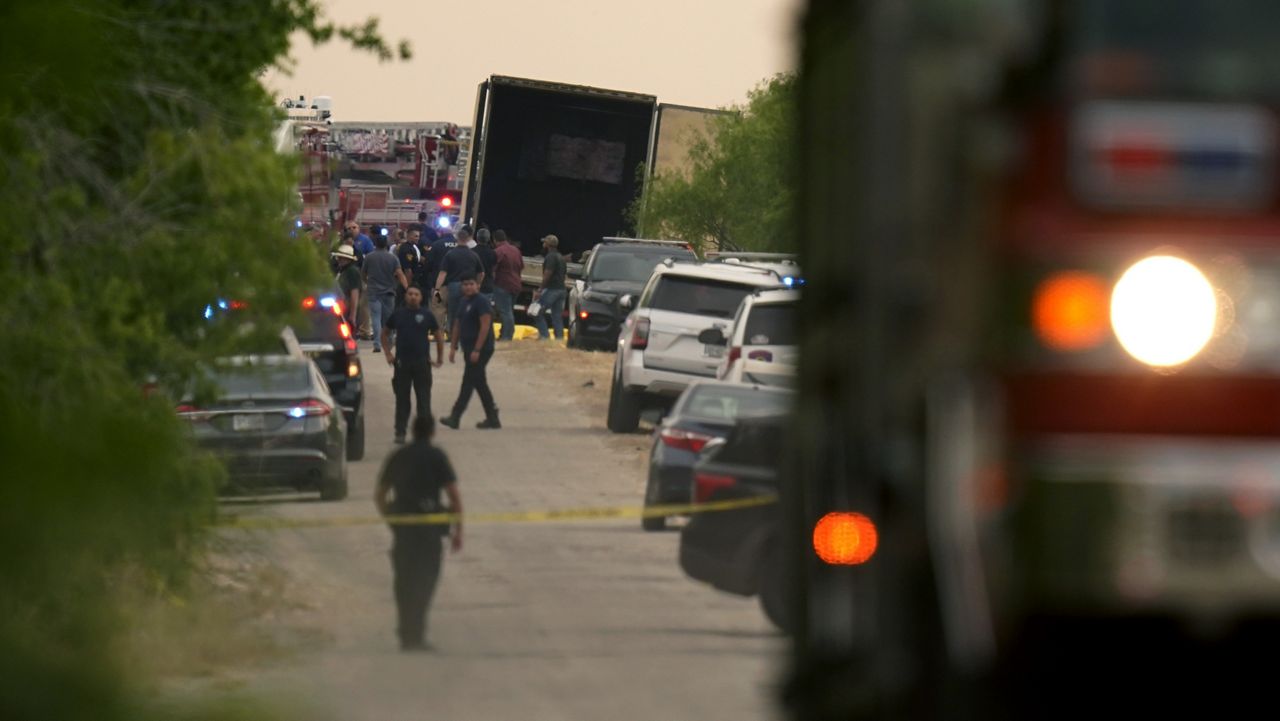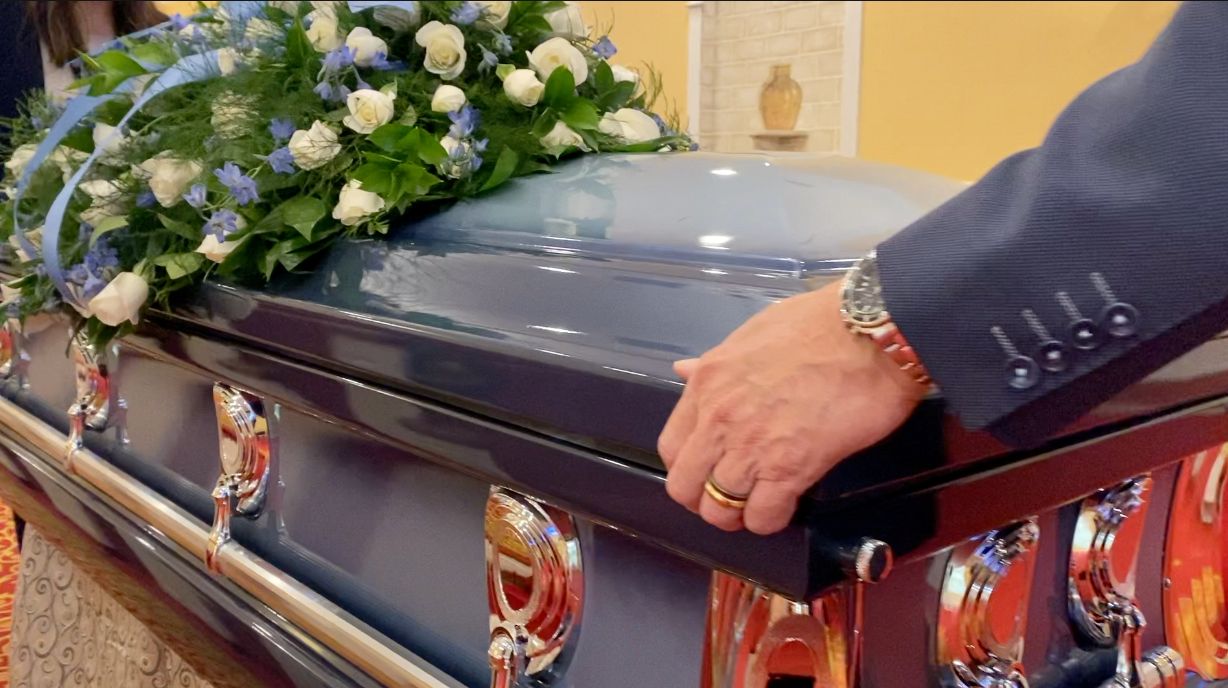SAN MARCOS, Texas -- It’s been a year and the investigation into a deadly fire at the Iconic Village apartment complex remains open.
- Fire claimed 5 lives and injured others
- Investigation into fire remains open
- Fire Marshal Kelly Kistner gives one-on-one interview
The fire, which broke out early in the morning of July 20, 2018, claimed five lives and injured seven.
It was one of the deadliest fire in the history of San Marcos.
Firefighters arrived at the scene within four minutes of the initial 911 call. Residents awoke to the sounds of screaming and sirens. Some were forced to jump out of their windows to avoid the flames.
Hundreds of residents were displaced.
San Marcos Fire Marshal Kelly Kistner said the identity of the person or persons who started the fire remains a mystery. Still, his department continues to follow leads and he’s confident the case will be solved. There is a $10,000 reward being offered for tips that lead to an arrest.

The families have since filed lawsuits against the complex management and owners.
Zachary Sutterfield was severely burned in the fire and continues to make a miraculous recovery.
The apartment complex has gotten approval to rebuild the complex, however, the city said construction does not have a start date.
Spectrum News reporter Stacy Rickard sat down with Kistner to discuss the fire at length and where the community is at today. Below is the expanded one-on-one interview:
Stacy Rickard: Paint me a picture of the magnitude of the fire that we were looking at a year ago.
San Marcos Fire Marshal Kelly Kistner: It was quickly realized that it was going to be a very large incident. We had multiple departments from all over the area that came in, whether it was South Hays Fire Department coming in to help, all the way to New Braunfels, Buda, Kyle, we used Seguin for mutual aid, Canyon Lake came in. So a lot of people from surrounding counties came to make that big response to be able to put that fire out. We quickly realized the investigation was also going to take a lot of resources. That's when we requested the state fire marshal's office and quickly requested ATF as well.
SR: Do you have a timeline on how fast y'all got to the scene, within how many minutes?
KK: So the original call came in at just after 4 o'clock, just before 4:30 a.m. on the 20th. The fire department was on scene in about four minutes from the time that they rolled out the door. And it was a quick response by the fire department. The men and women in operations did a fantastic job on the quick response. ATF was on the scene with their first initial resources by 8 a.m. The state was here about the same time as well. And so the response, whether it was at the local level, from our state resources, or federal partners, they were all very rapid.
SR: Had you ever seen a fire this magnitude in your career, or maybe in San Marcos?
No longer was I the state person coming from the outside, just to assist and go back to my house, this was home. And so this was a different role in that factor.KK: Absolutely in my career. Large fires, large magnitude, loss of life -- This was not something that was new for me. What I will tell you what was new was the passion and the compassion of the citizens and the residents here in San Marcos. And being much closer to it and taking on personal meaning as it's the city that you work in. No longer was I the state person coming from the outside, just to assist and go back to my house, this was home. And so this was a different role in that factor.
SR: Talk to me about the firefighters that did fight this fire, what is the emotional toll that this maybe took on them that day or the days afterwards?
KK: I'll tell you, the men and women of the San Marcos Fire Department who responded that night and then everybody in this department was touched by that loss. Every shift that works here in this department ended up on that scene at one time or another just because of how many hours it went on. And many of them still will talk about it, many of them have taken it personally. They were very involved with it, with the families, and still inquire where we're at with the investigation and want to have a role in that or at least sometimes be kept informed. And we try to do that as much as possible. It was something that hit the entire department and had an impact on everybody.
SR: We had five that were unaccounted for. So in those days, what did that search effort look like?
KK: Myself and Chief [Les] Stephens were involved in that from the very beginning. We asked for Texas Task Force One and those resources were sent to the City of San Marcos. It took a lot of work, because they had to actually shore up the apartment building. They had to make it safe, so that they could even work in there and begin to search for those five that were missing. But we were on the scene that entire time and anytime that we had personnel that were on that scene, investigators were working it, search and rescue teams were there, the entire administrative team was right there, either on the scene or back here behind the scenes making sure everything kept running at that operation out there, that the Iconic Village was supported.

SR: Once you did locate those five young people, talk to me about what kind of effect that had on you and your team, and how you had to relay that message to the families and the community.
KK: So I'll tell you the effect of finding five people, let alone the fact that these were five promising young people who were very young and had a life ahead of them, that's going to take a mental toll and being with the families. I will say the thing that made that easier for us to deal with internally was that behind the scenes, Chief Stephens along with a couple of our chaplains did a fantastic job of building relationships with the families and keeping them involved. Because of the work that Chief did, today we still have that good relationship with those families. We consider them members of the San Marcos Fire Department family.
SR: Have you kept up with the families recently? How are they doing?
So we do, we keep up with them. We probably talk to one of the families if not more, at least once a week.KK: We talk to them on a regular basis, especially Chief Stephens does, he keeps us informed. Some of them, you know, they're moving along. They'll never get over losing that child as they go through it. They have been supportive of each other; they have been a great small community network among themselves as well. They've been a fantastic support network, many of them have for Zach as he's gone through his recovery in San Antonio with his family. So we do, we keep up with them. We probably talk to one of the families if not more, at least once a week.
SR: There's been all these different reports of the smoke alarms -- did they go off? Did they go off too late? Clarify that for me.
KK: What I would tell you that some of that information we're still not releasing, because it's part of the investigation. You've heard people say the smoke alarms did not go off. You've heard other people say they did. And some of the videos that are out there, whether it's in social media or mainstream media, you can hear them going off in the background. So it's still a matter of determining which smoke alarms, if any of them, went off? When did they go off? Where did they go off? So that's still part of what's going on as we go through the process. Any requests that we've made of the property since that particular date, they've been very cooperative with us. They've worked with us, they've communicated well with us. And as far as the property goes, they didn't have any violations that we haven't seen in the almost 100 other properties that we've inspected since that incident.
SR: So they were up to code with everything as far as you know?
KK: I won't say they were up to code, but like I said, their violations weren't any more egregious than what we've seen in those other 100+ apartment complexes that we've inspected since then.
SR: Since then, regarding fire safety overall in the city, have there been any sort of changes that y'all have implemented or are going to in the future?
KK: There's been a lot of changes that have taken place, some of them had begun the implementation process before the Iconic Village fire. We've been able to implement a very robust multifamily Fire Prevention Program, which includes a risk management tool that we put in place to find out basically which apartment complexes, based on size and fire sprinklers and alarms and fire prevention features, needed to be looked at and inspected first. And I can tell you that as of today, that at least the largest 75 apartment complexes in San Marcos, which account for almost 80 percent of the rooms available for rent in San Marcos, have been inspected, and have been completed in less than a year.
SR: How can you make sure something like Iconic Village doesn't happen again? Is that specifically where that risk reduction factor comes in to play?
KK: Will that prevent an Iconic? I can't tell you that it will. Fire's been a phenomenon since man first discovered it. And we still have accidental fires, we have fires on a regular basis all across the state and the nation. They can't all be prevented, especially when someone decides that they want to set a fire like they did at Iconic. We know of approximately 282 multifamily properties in the City of San Marcos. We started where we felt there was a greatest risk to the citizens and the residents and we're working down that list. We went in and enforced the Fire Code and the fire inspectors were there and they're following up. There has to be the follow up. We're taking the follow up very seriously. We want to make sure those that we're touching before, we don't just say 'fix it' and we never see them again. We're making sure those things are fixed.
SR: The families of students that are moving here to go to Texas State, trying to find multifamily housing to live in, what's your message to them to ensure safety?
So [what] I can tell you is that your kids are safer today coming to San Marcos than they were a year ago. And next year, those kids will be safer than the kids were this year.KK: Their kids are our kids when they come to San Marcos and we take that seriously. And as a result, we're going to make the fire safety environment even safer throughout the City of San Marcos. And that's been something that ever since Chief Stephens got here, he's been driving and driving to make sure that we're a safer community. And we've even gone further because of the support we're getting from city council and city administration. So [what] I can tell you is that your kids are safer today coming to San Marcos than they were a year ago. And next year, those kids will be safer than the kids were this year. It's going to be a continual improvement that we're going to work through to make sure that people live in a fire safe environment.
SR: Switching to the investigation, kind of my last few questions. We found out it was arson a few months ago.
KK: About November is when we released that.
SR: Where are we at in this investigation?
KK: The investigation is ongoing. We are working leads. We're working tips still. We work those on a weekly basis at least. The investigation is something that is at least spoken about, addressed, something that's looked at on a very regular, almost daily basis. What I can tell you is we're never going to stop working it until we get that final answer. So we owe that to the families, we owe that to the victims, we owe that to the community. We're never going to stop until we find the person or persons who were responsible for that fire.
SR: How did you determine that this was arson?
KK: What I would tell you is it was determined through the use of science, adherence to national standards, excellent forensic resources. And so putting all of those together, whether it was the fact that we had fire investigators, we had engineers, we had fire scientists, chemists, all of these people were brought together into one team. And we used all of those expertise to come up with knowing scientifically without a doubt that this was what we're going to call a "set fire," an incendiary fire, which meant it was the criminal act of arson within the state of Texas.
SR: And we meet the criminal elements to get to arson?
KK: We do in this case, without a doubt.
SR: Do you know where the fire started?
KK: We do.
SR: Okay, can you confirm that y'all had responded to this particular complex in the past for fires?
KK: Yes, there have been other fires at this property. What I would tell you is if there's any that we think were intentional, and it could be related to this, we've reopened those, so I can't talk about those because they're part of an ongoing investigation. There's some we've looked at.
SR: Any warnings or suspicions that someone was targeting this particular complex or someone at this complex?
KK: Not that we know of.

PREVIOUS:
- Survivor Describes Life After Deadly San Marcos Fire
- Deadly San Marcos Apartment Fire Ruled Intentionally Set
- 5th Victim in San Marcos Apartment Fire Identified
- Four victims of San Marcos apartment fire identified
- 5 bodies found after San Marcos apartment fire
- Residents return to pick up the pieces after apartment fire displaces 200
- Zoning Board Approves Plans for Site of Destroyed Apartments










